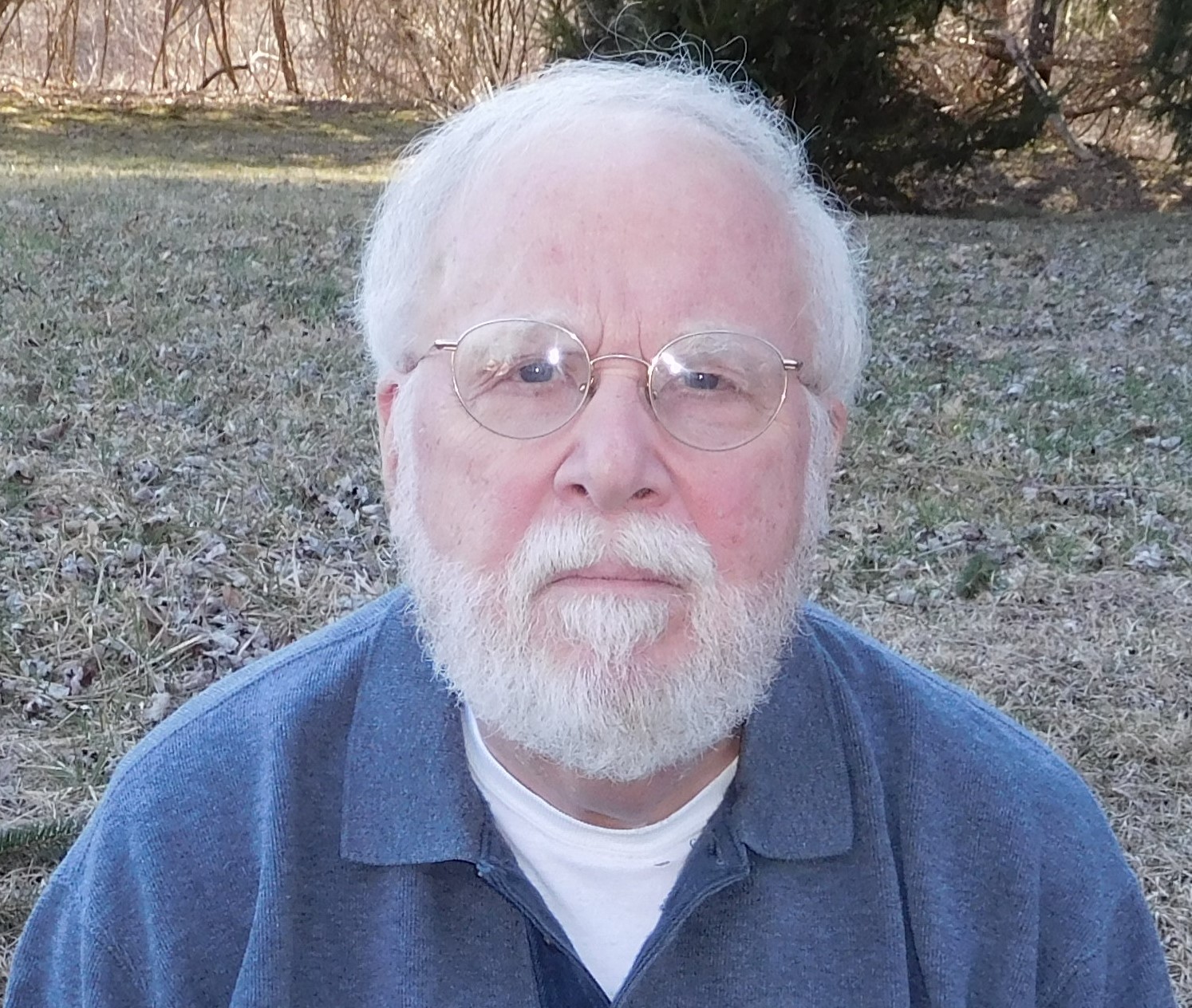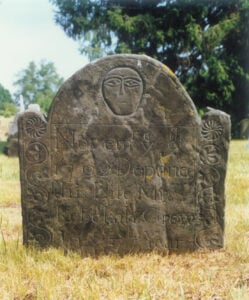From our modern perspective, seventeenth-century New England was a strange cultural cosmos: a post-medieval/pre-modern world where metaphysical beliefs, superstition, and fear of the supernatural still prevailed – a world in which people believed that witches were real and that ghosts, “specters,” and spirits from “the invisible world” could directly influence the lives of humans. We look back on that world today with a mixture of amusement and condescension, horror and fascination.
I’m a relative of Martha Carrier of Andover, Massachusetts, who was hanged for witchcraft in Salem in August 1692 after being convicted – largely on the basis of “spectral evidence” – of supernaturally tormenting and killing several neighbors as a minion of the Devil.[1] One of Martha’s nieces, Rebecca (Holt) Grow, is my great-great-great-great-great-great-grandmother. She was born in Andover in 1688; orphaned at age 10 and raised by neighboring farmers; married Thomas Grow, a young “maltster,” in 1710; and eventually migrated with her husband and six children to the northeastern Connecticut frontier town of Pomfret, where she died in 1762. Several years ago (prior the advent of findagrave.com), my wife and I traveled to Pomfret from our home in Ohio to visit Thomas and Rebecca’s graves, which are among the oldest, if not the oldest, Grow family graves in America.
Locating the cemetery was easy. Locating Thomas and Rebecca’s graves was another matter.
From two old sources – a 1913 genealogy and a 1919 NEHGS Register article – we knew that the couple had been buried in the Old Pomfret Burying Ground.[2] Locating the cemetery was easy. Locating Thomas and Rebecca’s graves was another matter. Navigating our car into the narrow gravel lane that borders the graveyard, we found ourselves gazing out on an acre or more of ancient gravestones packed haphazardly together in jagged rows extending as far as the eye could see. After coming upon a seemingly promising section of pre-revolutionary-war headstones, we immediately embarked on a decidedly unscientific search: wandering up and down row after row in hopes of stumbling upon a headstone bearing the surname “Grow.”
After an hour or so, we gave up. The gravestones were difficult to read. Many of their inscriptions were covered with lichen or badly eroded by weathering and acid rain. And the name “Grow” stubbornly refused to appear on any of those that were readable.
Further searches over the next two days yielded similarly disappointing results. Adding to our bewilderment was our discovery that Thomas and Rebecca’s names were not listed in the town hall’s burial registry for the cemetery. My frustration was becoming palpable, and I remember telling my wife: “The genealogy and the Register article can’t both be wrong. They’ve got to be there somewhere.”
The evening before our return to Ohio, we decided to give it one last try. By the time we arrived at the cemetery, the fading light of impending sunset was rapidly reducing our chances of success. Unbeknownst to me, my wife – the spiritually-inclined partner in the marriage – was saying a silent prayer to “the spirits of the ancestors” soliciting their help in locating the graves. As we stood next to our car deciding on a division of labor for our final search effort, something suddenly drew my eyes to a pair of headstones 30 yards away in a section of the cemetery that we had explored only briefly because most of the gravestones appeared to date stylistically from the nineteenth century. “I’ll start over there,” I said. As I approached the first headstone, a faint glimmer of twilight illuminated the name “Grow,” and then “Rebekah,” followed by the carved face of a Puritan soul effigy staring blank-eyed at me. To the immediate left was Thomas’ headstone.
I consider myself a rational, educated, reasonably enlightened person. When we departed Ohio at the start of our trip, I was 100 percent certain that my seventeenth-century ancestors’ belief in invisible spirits was the irrational product of unenlightened minds warped by fear of the supernatural. By the time I returned home, I was 99 percent certain of it.
Notes
[1] Mary Beth Norton, In the Devil’s Snare: The Salem Witchcraft Crisis of 1692 (New York: Vintage Books, 2002), 182–83, 233–35, 241–42, 254–56; Carol F. Karlsen, The Devil in the Shape of a Woman: Witchcraft in Colonial New England (New York: Vintage Books, 1987), 98–100.
[2] George W. Davis, John Grow of Ipswich/John (Groo) Grow of Oxford (Washington, D.C.: privately printed by the Carnahan Press, 1913; reprinted Salem, Mass.: Higginson Book Company, n.d.), 19; “Inscriptions in the Wappaquians Burial Ground, Pomfret, Conn., 1723–1861,” The New England Historical and Genealogical Register 73 [1919]: 113.
Share this:

About Michael Grow
Michael Grow, a retired history professor at Ohio University and a longtime NEHGS member, is the author of John Grow of Ipswich, Massachusetts and Some of His Descendants: A Middle-Class Family in Social and Economic Context From the 17th Century to the Present (Amherst, Mass.: Genealogy House, 2020).View all posts by Michael Grow →
